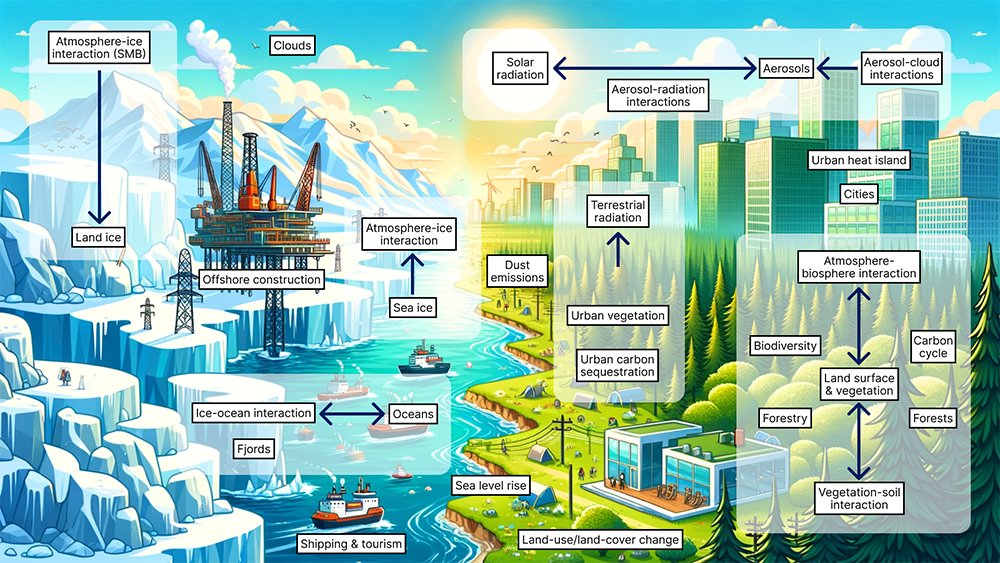New digital twin helps plan shipping routes and green areas
CSC has been selected to lead a project developing a new digital twin. TerraDT will model the impacts of glaciers, sea ice, vegetation and aerosol particles, among other things, on the Earth’s climate. The digital twin will bring concrete tools to decision-making at the local level – where should we plan shipping routes or parks? The project will use the LUMI supercomputer extensively.
The new digital twin TerraDT is closely linked to the Climate DT project, which is developing a digital twin for the Earth’s climate. CSC is also leading this project, which is part European Commission’s Destination Earth initiative. TerraDT is developing new components for the climate twin to more accurately describe the impact of glaciers, sea ice, vegetation and aerosol particles on the climate. This increases the reliability of climate projections.
In TerraDT, climate projections are made at a very high resolution of 10 km. This requires a significant amount of computing resources. The LUMI supercomputer, located in CSC’s data center in Kajaani, Finland, plays a significant role in the project. Another main computing platform for the project is Mare Nostrum 5, located in Barcelona. Both of these are pan-European EuroHPC supercomputers.
The aim is to obtain information to support decision-making, for example, on how sea ice conditions impact shipping routes. What kind of effects will sea level changes or extreme weather conditions have on coastal and off-shore construction and urban planning?
Jenni Kontkanen, Development Manager, CSC
Information to support decision-making
“The aim is to obtain information to support decision-making, for example, on how sea ice conditions impact shipping routes. What kind of effects will sea level changes or extreme weather conditions have on coastal and off-shore construction and urban planning? The model also provides us with important information related to forest biodiversity and carbon sink assessment,” says Jenni Kontkanen, Development Manager at CSC, who leads the TerraDT project.
An interactive user interface is developed for TerraDT, through which users can ask concrete what if questions. For example, how does building a park in a particular city impact temperatures or carbon sequestration? TerraDT’s high resolution and accuracy make it a practical tool for local decision-making: the effects of various phenomena can be viewed and predicted locally at a precise level.

Collaboration of 18 European actors
The project, led by CSC, involves 18 organizations from all over Europe. In addition to CSC, Finnish participants include the Finnish Meteorological Institute, the University of Helsinki, the University of Eastern Finland, and VTT Technical Research Centre of Finland.
“CSC coordinates the project as a whole. In addition, we participate in the technical implementation of the project and in the development of most components. We also ensure that the models work as efficiently as possible in the LUMI computing environment and develop user interfaces. CSC’s scientific work is related to ice sheet modeling, where we utilize the Elmer/Ice ice sheet model developed by CSC. Artificial intelligence methods are used in almost all components of the TerraDT”, says Jenni Kontkanen.
The TerraDT project will start at the beginning of 2025 and will last for four years. Its total budget is about 15 million euros. TerraDT is a Horizon Europe-funded research project.
Contact details

Jenni Kontkanen
PhD, Docent Jenni Kontkanen leads the Digital Twins group at CSC.
